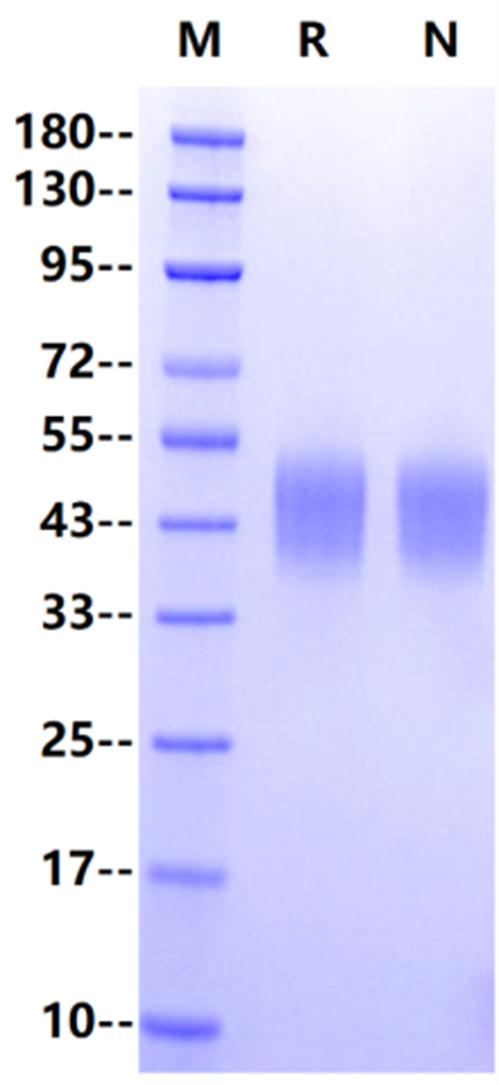Met26-Arg232, with C-terminal 8*His MKVLQEPACVSDYMSISTCEWKMGGPTNCSAELRLLYQLVFQSSETHTCVPENNGGVGCVCHLLMDDVVSMDNYTLDLWAGQQLLWKGSFKPSEHVKPRAPGNLTVHTNVSDTVLLTWSNPYPPDNYLYNDLTYAVNIWSENDPAYSRIHNVTYLKPTLRIPASTLKSGISYRARVRAWAQHYNTTWSEWSPSTKWYNSYREPFEQRGGGSHHHHHHHH
38-54kDa
Reconstitute at 0.1-1 mg/ml according to the size in ultrapure water after rapid centrifugation.
1、Nelms K. et al. (2003) The IL-4 receptor: signaling mechanisms and biologic functions. Annual Review of Immunology. 17: 701-738.
IL-4Rα is a member of the hematopoietin receptor superfamily. Among the defining features of the members of this superfamily of receptors are shared structural motifs in the extracellular region, which consists of type III fibronectin domains. These motifs include conserved paired Cys residues and, in the membrane proximal region, a WSXWS motif. The latter has been proposed to be required for maintaining the receptor in a conformation favorable to cytokine binding. Structural alterations in the IL-4Rα extracellular region may result in altered receptor signaling capabilities. Indeed, a variant of the human IL-4Rα chain containing a Ile50Val substitution was isolated from atopic individuals and has been shown to enhance signal transduction resulting in the increased production of IgE.


Immobilized IL-4, Human (Cat. No. UA040026) at 2.0μg/mL (100μL/well) can bind -4Rα/CD124 His Tag, Cynomolgus (Cat. No. UA010379) with EC50 of 42.22-60.87 ng/ mL.